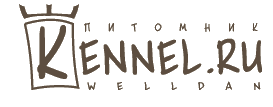(FCI 147/16.01.1996)
ORIGIN: Germany.
UTILISATION: Companion, Security and Working dog.
BRIEF HISTORICAL SUMMARY:
The Rottweiler is considered to be one of the oldest breeds of dog. Its origin goes back to Roman times. These dogs were kept as herder or driving dogs. They marched over the Alps with the Roman legions, protecting the humans and driving their cattle. In the region of Rottweil, these dogs met and mixed with the native dogs in a natural crossing.
The main task of the Rottweiler now became the driving and guarding of the herds of cattle and the defence of their masters and their property. This breed acquired ist name from the old federal town of Rottweil and was known as the "Rottweil butcher's dog". The butchers bred this type of dog purely for performance and usefulness.
In due course, a first rate watch and droving dog evolved which could also be used as a draught dog.
When, at the beginning of the twentieth century, various breeds were needed for police service, the Rottweiler was amongst those tested. It soon became evident that the breed was highly suitable for the tasks set by police service and therefore they were officially recognised as police dogs in 1910.
Rottweiler breeders aim at a dog of abundant strength, black coated with clearly defined rich tan markings, whose powerful appearance does not lack nobility and which is exceptionally well suited to being a Companion, Security and Working dog.
GENERAL APPEARANCE:
The Rottweiler is a medium to large size, stalwart dog, neither heavy nor light and neither leggy nor weedy. His correctly proportioned, compact and powerful build leads to the conclusion of great strength, manoeuvrability and endurance.
IMPORTANT PROPORTIONS:
The length of the body, measured from the sternum (breast-bone) to the ischiatic tuberosity, should not exceed the height at the withers by, at most, 15%.
BEHAVIOUR AND CHARACTER:
Being good natures, placid and fond of children in basic disposition, he is very devoted, obedient, biddable and eager to work. His appearance is natural and rustic, his behaviour self assured, steady and fearless. He reacts to his surroundings with great alertness.
CRANIAL REGION:
Skull: Of medium length, the skull broad between the ears. Forehead line moderately arched as seen from the side. Occipital bone well developed without being conspicuous.
Stop: Well defined.
FACIAL REGION
Nose: Straight nasal bridge, broad at base, moderately tapered. Nose well developed, more broad than round with relatively large nostrils, always black.
Muzzle: The foreface should appear neither elongated nor shortened in relation to the cranial region.
Lips: Black, close fitting, corner of the mouth not visible, gum as dark as possible.
Jaw: Upper and lower jaw strong and broad.
Cheeks: Zygomatic arches pronounced.
Teeth: Strong complete dentition (42 teeth) with scissor bite, the upper incisors closely overlapping the lower incisors.
Eyes: Of medium size, almond shaped, dark brown in colour. Eyelids close fitting.
Ears: Medium sized, pendant, triangular, wide apart, set on high. The close fitting ears, set well forward, give the impression of a broad skull.
NECK: Of fair length, well muscled, slightly arched, free from throatiness, without dewlap.
